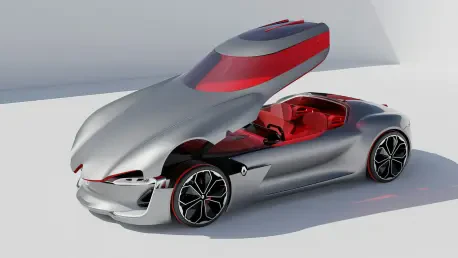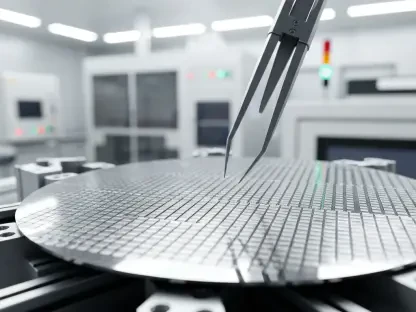In a transformative move for the automotive sector, Arm has introduced the Zena Compute Subsystem (CSS), a state-of-the-art platform tailored for the development of AI-driven vehicles. This groundbreaking innovation promises to alter the way automakers incorporate advanced technologies, such as driver assistance and infotainment systems, into modern vehicles. By integrating the latest Armv9 Automotive Enhanced (AE) cores alongside dedicated real-time processing and security mechanisms, Zena CSS aims to drastically accelerate the deployment of intelligent vehicle systems. As the industry continues to shift towards highly sophisticated automotive setups, Zena CSS emerges as a pivotal tool in addressing the complex demands from both automakers and end-users.
The rollout of Zena CSS is in direct response to the growing reliance on advanced AI technologies within contemporary vehicles. Esteemed global car manufacturers like Tesla, Rivian, Mercedes-Benz, and others anchor their vehicles’ safety and entertainment systems around Arm’s technology. Thus, the unification of AI and automotive technology is no longer merely a trend but an indispensable evolution. In a world where software-defined vehicles are becoming the norm, Zena CSS stands out by furnishing a robust platform that not only enhances computing capacity but does so while maintaining rigorous safety and energy efficiency standards. This evolution is not just about incorporating more technology; it’s about doing so in a strategic manner that serves the complex needs of today’s auto industry.
A New Era of AI-Defined Automotive Experiences
Zena CSS marks a significant turning point in the realm of AI-enhanced vehicle models by providing extensive computational capabilities without compromising on safety or efficiency. By cutting chip development time by up to 12 months and significantly reducing silicon engineering efforts, the platform empowers manufacturers to bring AI-enhanced vehicles to the market faster than ever before. This accelerated production timeline means manufacturers can swiftly implement cutting-edge systems such as interactive voice and touch interfaces, digital cockpit experiences, and comprehensive driver assistance technologies. These innovations are crucial not just for enriching user experiences but for bolstering safety, meeting the growing expectations of modern consumers who demand seamless and secure interactions with their vehicles.
Built on the powerful Armv9 Automotive Enhanced (AE) architecture, Zena CSS is at its core equipped with 16 Cortex-A720AE cores, designed specifically for both ADAS and in-vehicle infotainment applications. This sophisticated setup is complemented by a unique Cortex-R82AE-powered Safety Island responsible for real-time processing capabilities. Handling fault management, safety monitoring, and various control functions, this Safety Island ensures compliance with the stringent safety parameters required in today’s automotive environments. Furthermore, this architecture’s integration facilitates swift data processing and transmission, which is essential for maintaining vehicle integrity and enhancing the overall driving experience. These features collectively underscore Zena CSS’s role in revolutionizing the landscape for AI-augmented vehicles.
Robust Security and Enhanced ADAS Capabilities
Security and processing power form the bedrock of Zena CSS’s design. By incorporating a dedicated Runtime Security Engine fortified with a safety-capable Hardware Root of Trust, the platform utilizes Arm’s esteemed TrustZone technology to provide comprehensive SoC-level security. This dedicated security enclave ensures that vehicles are protected from emerging threats. Meanwhile, featuring CPU coherency and chip-to-chip connectivity through the CMN S3AE, Zena CSS offers seamless data handling essential for complex vehicular functions. Optional features like Image Signal Processing, powered by Mali-C720AE and Mali GPU, further enhance capabilities such as surround view and driver monitoring. Together, these cutting-edge components exemplify Zena CSS’s commitment to providing a robust, secure, and adaptable architecture for the next generation of automotive systems.
The adaptability of Zena CSS allows for the straightforward integration of accelerators and partner-specific logic, catering to the diverse demands posed by AI-centric SoC designs. By endorsing a standardized architecture, it facilitates OEMs and silicon providers in reusing software and hardware designs, thereby streamlining global vehicle delivery processes. This reuse simplifies development, reducing associated costs and time while ensuring consistent system performance. Such flexibility is essential in a field where developing tailor-made hardware and software solutions for every vehicle model can be laborious and fraught with challenges. Zena CSS offers a platform where partners can innovate on a standard foundation, differentiating their offerings through unique features and applications that add value.
Industry Adoption and Developer Advancements
Already, multiple top-tier OEMs, especially those at the forefront of the electric vehicle market, along with major silicon providers, have either licensed Zena CSS or are in advanced stages of discussions. The industry consensus is that Zena CSS has the potential to become the bedrock for a significant portion of vehicle systems in the coming years. This growing acceptance is driven by the urgent necessity of establishing a strong computing foundation essential for thriving in the current era of technology-driven vehicles. This backdrop of industry-wide enthusiasm underlines the realization that Arm’s latest platform provides a competitive edge needed to excel in a rapidly evolving automotive landscape.
Zena CSS has been engineered not only as a hardware marvel but also as a catalyst for software development, vastly revolutionizing the landscape. Its architecture empowers developers to engage in creative innovation from the outset, significantly reducing the time required to bring new silicon to market. Supported by cloud-based virtual platforms from partners such as AWS and Siemens, developers can swiftly commence working on Zena CSS, leading to a substantial acceleration in software innovation timelines. This integrated approach embodies a fundamental shift in the way software solutions are conceptualized, developed, and deployed, giving the vast Arm developer ecosystem, encompassing millions, unmatched tools to drive the industry rapidly forward.
Open Standards and Next-Gen Solutions
Zena CSS embraces open standards like AUTOSAR, COVESA, and Virtio, providing unparalleled interoperability and flexibility. Backed by communities such as SOAFEE, this level of openness ensures developers are part of a well-supported network, enhancing both development processes and broader industry adoption. Such alignment with recognized frameworks augments development speed and assures widespread acceptance, as developers leverage these standards to produce innovative solutions without navigating proprietary constraints. With SOAFEE’s over 150 member organizations, including automotive heavyweights, this consortium-driven collaboration strengthens Zena CSS’s position as a foundational tool in crafting the next generation of software-defined vehicles.
This launch underscores a critical milestone towards achieving AI-defined vehicles on a wide scale. With the number of Arm-based chip shipments tripling, it’s evident that trust in Arm’s platforms remains unwavering across the automotive sector. With such platforms, manufacturers are armed with the necessary tools to efficiently and strategically produce intelligent, software-forward vehicles. The ability to develop and test software using the same Arm infrastructure from the cloud to physical vehicles ensures that cloud-to-car parity is achieved seamlessly. This comprehensive approach ensures that the software created meets the highest standards of quality and safety across its journey from conception to integration into modern vehicles.
A New Path Forward in Automotive Innovation
Arm’s unveiling of the Zena Compute Subsystem (CSS) marks a significant advancement in the automotive industry, designed to facilitate the development of AI-powered vehicles. This cutting-edge platform is set to transform how automakers integrate complex technologies, like driver assistance and infotainment systems, into cars. Featuring the latest Armv9 Automotive Enhanced cores with specialized real-time processing and security features, the Zena CSS is poised to significantly hasten the deployment of intelligent vehicle systems. As the automotive landscape shifts towards intricate setups, Zena CSS provides a crucial solution to meet the burgeoning demands of automakers and consumers.
This introduction responds to the increasing reliance on AI in modern vehicles. Renowned manufacturers, such as Tesla, Rivian, and Mercedes-Benz, rely heavily on Arm’s technology for their vehicles’ safety and entertainment functions. The merging of AI with automotive tech has evolved into an essential progression. In this realm of software-defined vehicles, Zena CSS not only enhances computing power but ensures safety and energy standards. This advancement isn’t about mere tech inclusion; it’s strategically addressing today’s auto industry complexities.









